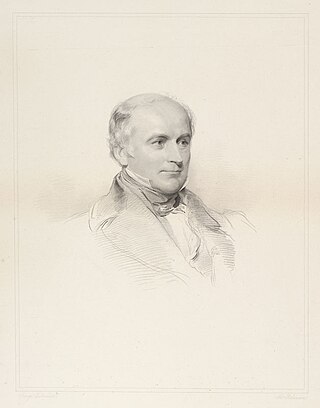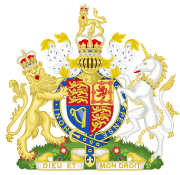
In law, a trust refers to a relationship in which the owner of property gives it to a designated entity, usually described as a trustee. The trustee has a duty to safeguard and use the assets of the trust solely for the benefit of another person or group of persons until distribution, pursuant to the provisions of the trust. In the English common law tradition, the party who entrusts the property is known as the "settlor", the party to whom the property is entrusted is known as the "trustee", the party for whose benefit the property is entrusted is known as the "beneficiary", and the entrusted property itself is known as the "corpus" or "trust property". A testamentary trust is an irrevocable trust that is established and funded pursuant to the terms of a deceased person's will. An inter vivos trust is a trust created during the settlor's lifetime.

In trust law, an express trust is a trust created "in express terms, and usually in writing, as distinguished from one inferred by the law from the conduct or dealings of the parties." Property is transferred by a person to a transferee, who holds the property for the benefit of one or more persons, called beneficiaries. The trustee may distribute the property, or the income from that property, to the beneficiaries. Express trusts are frequently used in common law jurisdictions as methods of wealth preservation or enhancement.

A purpose trust is a type of trust which has no beneficiaries, but instead exists for advancing some non-charitable purpose of some kind. In most jurisdictions, such trusts are not enforceable outside of certain limited and anomalous exceptions, but some countries have enacted legislation specifically to promote the use of non-charitable purpose trusts. Trusts for charitable purposes are also technically purpose trusts, but they are usually referred to simply as charitable trusts. People referring to purpose trusts are usually taken to be referring to non-charitable purpose trusts.
An offshore trust is a conventional trust that is formed under the laws of an offshore jurisdiction.
In trust law, a settlor is a person who settles their property for the benefit of the beneficiary. In some legal systems, a settlor is also referred to as a trustor, or occasionally, a grantor or donor. Where the trust is a testamentary trust, the settlor is usually referred to as the testator. The settlor may also be the trustee of the trust or a third party may be the trustee. In the common law of England and Wales, it has been held, controversially, that where a trustee declares an intention to transfer trust property to a trust of which he is one of several trustees, that is a valid settlement notwithstanding the property is not vested in the other trustees.

Saunders v Vautier[1841] EWHC J82, (1841) 4 Beav 115 is a leading English trusts law case. It laid down the rule of equity which provides that, if all of the beneficiaries in the trust are of adult age and under no disability, the beneficiaries may require the trustee to transfer the legal estate to them and thereby terminate the trust. The rule has been repeatedly affirmed in common law jurisdictions, and is commonly referred to as "the rule in Saunders v Vautier" for shorthand.

In the trust law of England, Australia, Canada and other common law jurisdictions, a discretionary trust is a trust where the beneficiaries and their entitlements to the trust fund are not fixed, but are determined by the criteria set out in the trust instrument by the settlor. It is sometimes referred to as a family trust in Australia or New Zealand. Where the discretionary trust is a testamentary trust, it is common for the settlor to leave a letter of wishes for the trustees to guide them as to the settlor's wishes in the exercise of their discretion. Letters of wishes are not legally binding documents.
Australian trust law is the law of trusts as it is applied in Australia. It is derived from, and largely continues to follow English trust law, as modified by state and federal legislation. A number of unique features of Australian trust law arise from interactions with the Australian systems of company law, family law and taxation.

English trust law concerns the protection of assets, usually when they are held by one party for another's benefit. Trusts were a creation of the English law of property and obligations, and share a subsequent history with countries across the Commonwealth and the United States. Trusts developed when claimants in property disputes were dissatisfied with the common law courts and petitioned the King for a just and equitable result. On the King's behalf, the Lord Chancellor developed a parallel justice system in the Court of Chancery, commonly referred as equity. Historically, trusts have mostly been used where people have left money in a will, or created family settlements, charities, or some types of business venture. After the Judicature Act 1873, England's courts of equity and common law were merged, and equitable principles took precedence. Today, trusts play an important role in financial investment, especially in unit trusts and in pension trusts. Although people are generally free to set the terms of trusts in any way they like, there is a growing body of legislation to protect beneficiaries or regulate the trust relationship, including the Trustee Act 1925, Trustee Investments Act 1961, Recognition of Trusts Act 1987, Financial Services and Markets Act 2000, Trustee Act 2000, Pensions Act 1995, Pensions Act 2004 and Charities Act 2011.

The three certainties refer to a rule within English trusts law on the creation of express trusts that, to be valid, the trust instrument must show certainty of intention, subject matter and object. "Certainty of intention" means that it must be clear that the donor or testator wishes to create a trust; this is not dependent on any particular language used, and a trust can be created without the word "trust" being used, or even the donor knowing he is creating a trust. Since the 1950s, the courts have been more willing to conclude that there was intention to create a trust, rather than hold that the trust is void. "Certainty of subject matter" means that it must be clear what property is part of the trust. Historically the property must have been segregated from non-trust property; more recently, the courts have drawn a line between tangible and intangible assets, holding that with intangible assets there is not always a need for segregation. "Certainty of objects" means that it must be clear who the beneficiaries, or objects, are. The test for determining this differs depending on the type of trust; it can be that all beneficiaries must be individually identified, or that the trustees must be able to say with certainty, if a claimant comes before them, whether he is or is not a beneficiary.

Schmidt v Rosewood Trust Ltd[2003] UKPC 26 is a judicial decision concerning the information rights of a beneficiary under a discretionary trust. Although the judgment involved a question as to the law of the Isle of Man, the Privy Council's judgment in Schmidt v Rosewood was adopted into English law by Briggs J in Breakspear v Ackland[2008] EWHC 220 (Ch).
The creation of express trusts in English law must involve four elements for the trust to be valid: capacity, certainty, constitution and formality. Capacity refers to the settlor's ability to create a trust in the first place; generally speaking, anyone capable of holding property can create a trust. There are exceptions for statutory bodies and corporations, and minors who usually cannot hold property can, in some circumstances, create trusts. Certainty refers to the three certainties required for a trust to be valid. The trust instrument must show certainty of intention to create a trust, certainty of what the subject matter of the trust is, and certainty of who the beneficiaries are. Where there is uncertainty for whatever reason, the trust will fail, although the courts have developed ways around this. Constitution means that for the trust to be valid, the property must have been transferred from the settlor to the trustees.
In English law, a purpose trust is a trust created for the fulfillment of a purpose, not for the benefit of a person. These are normally considered invalid by the courts because they have no legally recognized beneficiaries, therefore nobody to enforce the trust, with the exception of charitable trusts, which are enforceable by the Attorney General as they represent the public interest. As well as charitable trusts, there are several exceptions to the rule against purpose trusts. If the requirement to fulfill a purpose is a request, rather than an obligation, the trust is valid; a trust will also be found valid if, while being for a purpose, it involves beneficiaries in some respect. Purpose trusts can also be valid if they are for the erection or maintenance of tombs and memorials, the maintenance of animals, and arguably the saying of masses, although these must all obey the rule against perpetuities and not continue for more than 21 years after the testator's death.
Discretionary trusts and powers in English law are elements of the English law of trusts, specifically of express trusts. Express trusts are trusts expressly declared by the settlor; normally this is intended, although there are situations where the settlor's intentions create a trust accidentally. Normal express trusts are described as "fixed" trusts; the trustees are obliged to distribute property, with no discretion, to the fixed number of beneficiaries. Discretionary trusts, however, are where the trustee has discretion over his actions, although he is obliged to act. The advantages of discretionary trusts are that they provide flexibility, and that the beneficiaries hold no claim to the property; as such, they cannot seek to control it, and it cannot be claimed for their debts. A power, or "mere power", on the other hand, is where not only does the holder have discretion over his actions, he has discretion over whether to act in the first place.
Re Baden’s Deed Trusts [1972] EWCA Civ 10 is an English trusts law case, concerning the circumstances under which a trust will be held to be uncertain. It followed on from McPhail v Doulton, where the House of Lords affirmed that upholding the settlor's intentions was of paramount importance. It dealt with the same facts as McPhail v Doulton, since the Lords had remanded the case to the Court of Appeal to be decided using the legal principles set out in McPhail.

Re Tuck's Settlement Trusts[1977] EWCA Civ 11 is a leading English trusts law case, concerning the certainty of trusts.
Re Barlow's Will Trusts [1979] 1 WLR 278 is an English trusts law case, concerning certainty of the words "family" and "friends" in a will.
The beneficiary principle is a policy of English trusts law, and trusts in Commonwealth jurisdictions, that trusts which do not have charitable objects, as under the UK Charities Act 2006 sections 2 and 3, and also do not make the trust property available for the benefit of defined people, are void.

Re Gulbenkian’s Settlements Trusts [1968] is an English trusts law case, concerning the certainty of trusts. It held that while the 'is or is not' test was suitable for mere powers, the complete list test remained the appropriate test for discretionary trusts. It was only a year later in McPhail v Doulton that the 'is or is not' test was considered appropriate for discretionary trusts by a different panel of their lordships.

Re Denley’s Trust Deed [1969] 1 Ch 373 is an English trusts law case, concerning the policy of the "beneficiary principle". It held that so long as the people benefitting from a trust can at least be said to have a direct and tangible interest, so as to have the locus standi to enforce a trust, it would be valid.








